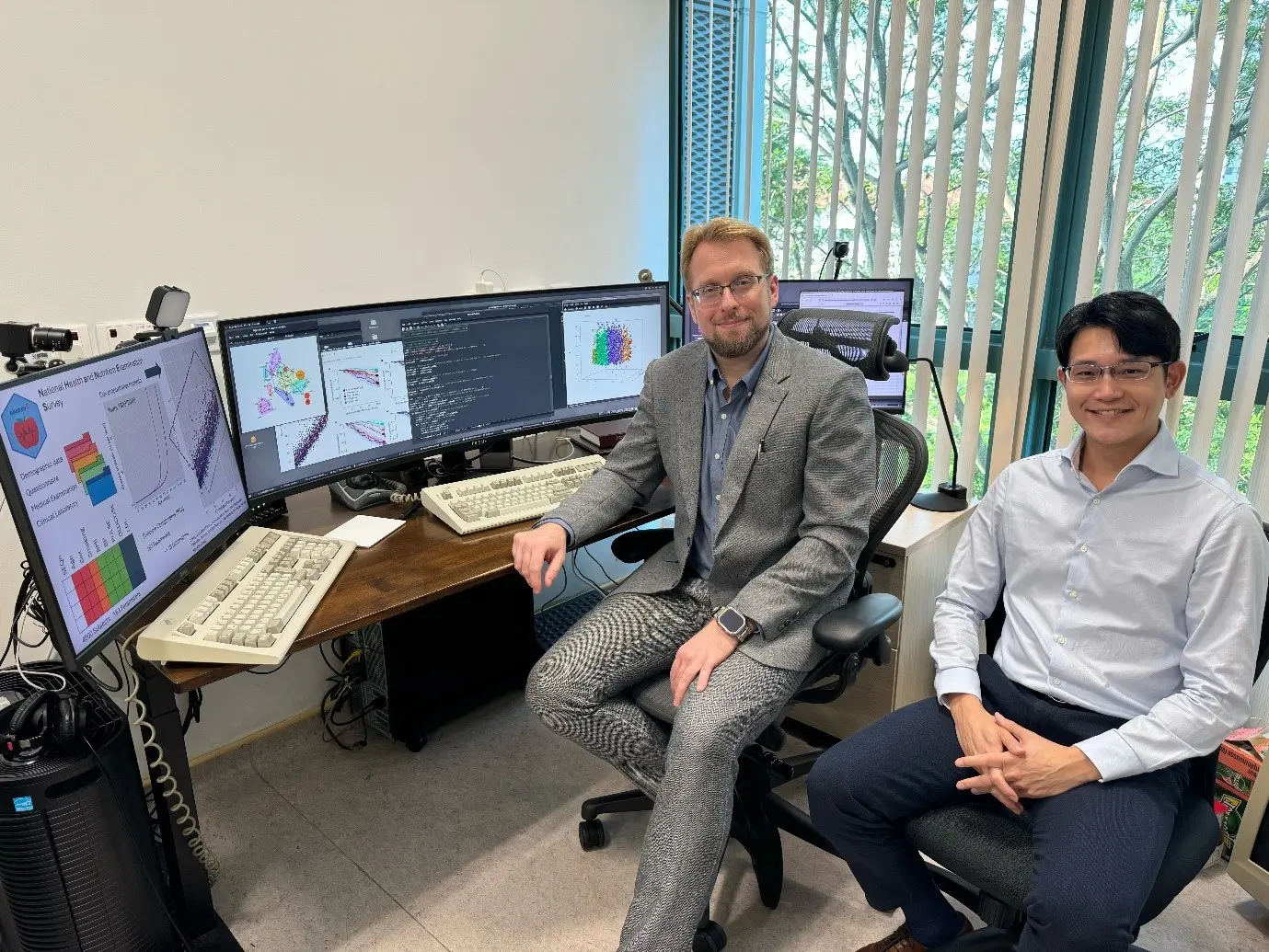Clinical ageing clocks: NUS and SGH develop algorithm-powered tests to indicate mortality risk
Published: 31 Jul 2024

Associate Professor Jan Gruber from the Healthy Longevity Translational Research Programme at the Yong Loo Lin School of Medicine, and Dr Fong Sheng from Singapore General Hospital created a new class of clinical ageing clocks to provide a new way of highlighting healthy and unhealthy ageing trajectories and test ageing intervention strategies.
A few tubes of blood, a urine test and a health questionnaire to determine a person’s biological age are all that is needed to indicate one’s future risk of mortality.
A new class of clinical ageing clocks using these tests has emerged – PCAge and LinAge.
Clinical ageing clocks are tools or biomarkers that assess various physiological and molecular parameters to estimate a person’s biological age, as opposed to his or her chronological age.
This new class of clinical ageing clocks – developed by Associate Professor Jan Gruber from the Healthy Longevity Translational Research Programme at the Yong Loo Lin School of Medicine, National University of Singapore (NUS Medicine) and Dr Fong Sheng from the Department of Geriatric Medicine at Singapore General Hospital (SGH) – goes one step further in helping researchers to tailor longevity interventions, bypassing exorbitant longitudinal studies to test the efficacy of longevity drugs or supplements.
As an algorithm that leverages machine learning, PCAge takes advantage of an analytical matrix factorisation technique that can reduce complex high-dimensional data into lower dimensions.
Using publicly available data from the National Health and Nutrition Examination Survey (NHANES) in the United States of America, comprising more than 3,000 participants aged between 40 to 89 years, the researchers constructed their ageing clock (PCAge) using this historical data and went on to test its performance in several separate cohorts of patients. They found that, based on data from a single survey timepoint, often decades before death, PCAge showed significant predictive efficacy over 20 years and across a wide range of ages, illustrating its power in characterising individual future ageing trajectories. Informative predictions could be made in this way well before the onset of any specific pathology.
Furthermore, PCAge outperformed a well-known clinical risk marker, the atherosclerosis cardiovascular disease score, which is a metric used by doctors to predict the 10-year risk of cardiovascular disease or stroke, in predicting survival. Finally, the team generated a streamlined clinical ageing clock, LinAge, based directly on PCAge, that maintains equivalent predictive power but requires substantially fewer parameters. LinAge can be determined from routine clinical blood tests, a urine test, and health questionnaire.
These results support the insight that a person’s chronological or calendar age is less useful in determining how long that person will survive and remain in good health than their actual biological age.
The paper is published in Nature Aging, titled ‘Principal component-based clinical aging clocks identify signatures of healthy aging and targets for clinical intervention’.
Read the media release here for more details.

